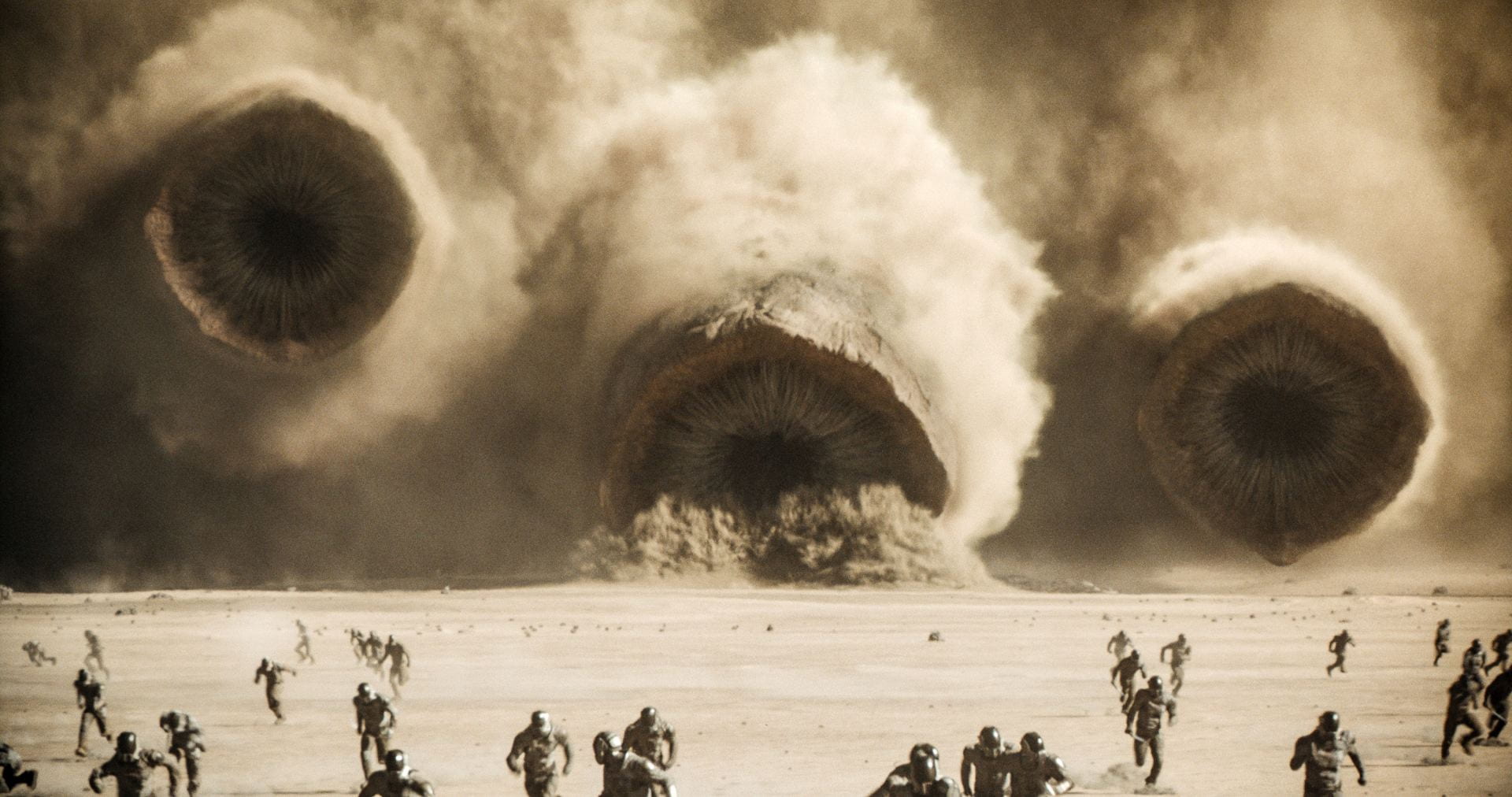
The giant sandworms of the planet Arrakis are an even bigger presence in “Dune: Part Two” than they were in 2021’s “Dune.” Credit: Courtesy Warner Bros. Pictures (via TNS)
Creating an epic standalone science-fiction film can be difficult, but executing a satisfying sequel to that story can be even harder.
With the Friday release of “Dune: Part Two” — and the notable success it has already achieved, having earned a 9.0 IMDb rating at the time of publication — Ohio State film community members Andy Rose, a Department of Film, Theatre and Media Arts senior lecturer, and Meredith Stein, student and the Intergalactic Science Fiction Club’s president, weighed in on what makes a strong science-fiction sequel and why “Dune: Part Two” is such a hit.
Rose said one of the most important factors in creating an effective sequel is crafting a script that can rival the original’s. The “Terminator” films, he said, are a prime example of this; seeing as director James Cameron and actor Arnold Schwarzenegger were largely unknown, Rose said the first film had zero expectations prior to its release.
“It was kind of a low-budget movie that just kind of came out of nowhere and was successful,” Rose said. “Then on the second one, it’s like, ‘Well, OK, now that we’ve got the money and we’ve got better technology, we can come up with this better villain that can, you know, morph into these characters.’”
Accordingly, Rose said one likely explanation for the success of “Terminator 2: Judgement Day” was its independently strong script; specifically, the fact that Cameron changed the titular character from a villain to a hero enabled the second movie to exist in its own right and not solely rely on the original film’s success, he said.
“If you really work on the script and get a good story, then you know it needs to work on its own,” Rose said. “A sequel has to be successful for what it is, not just because it’s based on a movie that came out two years ago or however many years ago.”
In the case of “Star Wars,” Stein, also a third-year in materials science and engineering, said each film in the original and prequel trilogies has its own respective storyline but remains largely cohesive in order to keep fans tuned in. This strategy, she said, is not one that the subsequent “sequel trilogy” maintained, which may account for its films experiencing lesser critical success.
“The creators have a clear vision for where they want to go in each one and they’re good at keeping the plot of the movie constant as well as having a larger overarching plot that smaller plots work toward,” Stein said. “The sequel trilogy movies did not do that nearly as well.”
Even with a script that wows, Rose said a commendable sequel can be challenging to achieve, especially because follow-up films typically cost more to make than their predecessors.
“Not only do you have to beef up the special effects and everything, but you have to pay the actors a lot more,” Rose said. “That first movie that you made for $20 million now is suddenly a $50 million movie and then the next one is going to be a $75 million movie.”
Even if a successful second film is released, Stein said studios oftentimes fall into the trap of not knowing when to stop creating sequels, meaning they will continue expanding a franchise even if it has outstayed its welcome.
“With the ‘Fast and the Furious’ movies, the first couple were in the spirit of the story,” Stein said. “The next went off the rails fairly quickly and it’s just a money grab at this point.”
Rose agreed.
“They will never call it quits as long as the movies are making money and they will keep on making them now,” Rose said. “Sometimes the actors say, ‘Enough’s enough’ and then you can’t really make the sequel.”
In the cases of certain popular franchises like “Star Wars,” Rose said massive corporations like Disney can buy companies like Lucasfilm — the series’ original owner — to keep creating film installations because the company wants to make back the $4.05 billion it spent on Lucasfilm and the studio knows people will keep coming back for more.
“Sometimes you can move the franchise into other characters and you don’t need to have Harrison Ford or Mark Hamill in the movies anymore,” Rose said. “You come up with new characters that replace the old characters, but you can still call it a ‘Star Wars’ movie.”
Stein said franchises such as “Star Wars” and “Lord of the Rings” highlight the importance of specifically a trilogy’s second film.
“In the middle movie, you have to be really careful because you can’t lead into that final movie too early. But you also can’t just throw the audience a load of filler,” Stein said. “Because then you’re not going to keep them interested for the third movie, then you’ve sunk yourself.”
While the first movie usually becomes a classic and the third film is the epic conclusion, she said the second film has to develop the characters more and introduce new challenges without overdoing it.
“It’s all about expanding on that first movie, adding in some new exciting elements without taking too much away from what the third movie is supposed to be,” Stein said.
In regard to “Dune: Part Two,” Stein said the film sets itself apart from other science-fiction movies for a few reasons, including its graphics, set and costume designs, visual effects and “off-the-wall” nature.
“The way it’s told, the way it’s shot and the way it progresses is a lot different than any other sci-fi movies that I’ve seen,” Stein said. “The fact that it’s so separated from most other sci-fi movies makes it a huge draw because this is something brand new, which you don’t often get anymore.”
Though “Dune: Part Two” may be an exception, Rose said achieving a science-fiction sequel as beloved as its precursor is no small feat.
“Very few sequels can duplicate what the original one is,” Rose said. “And that’s just, you know, the nature of you wanting to see the characters again, but it’s a whole different type of adventure.”


